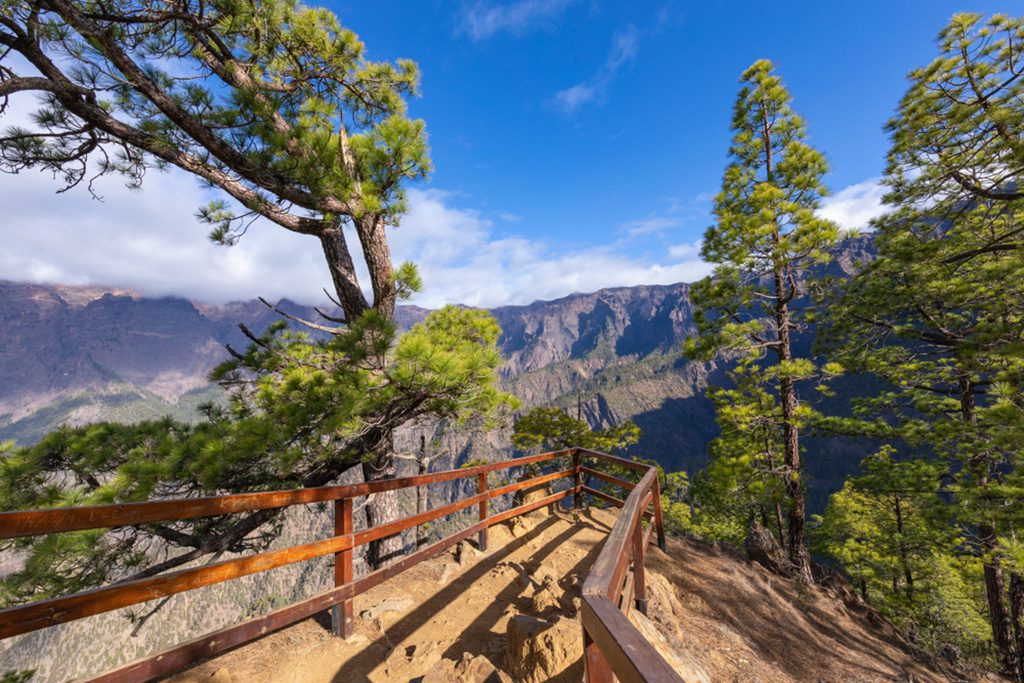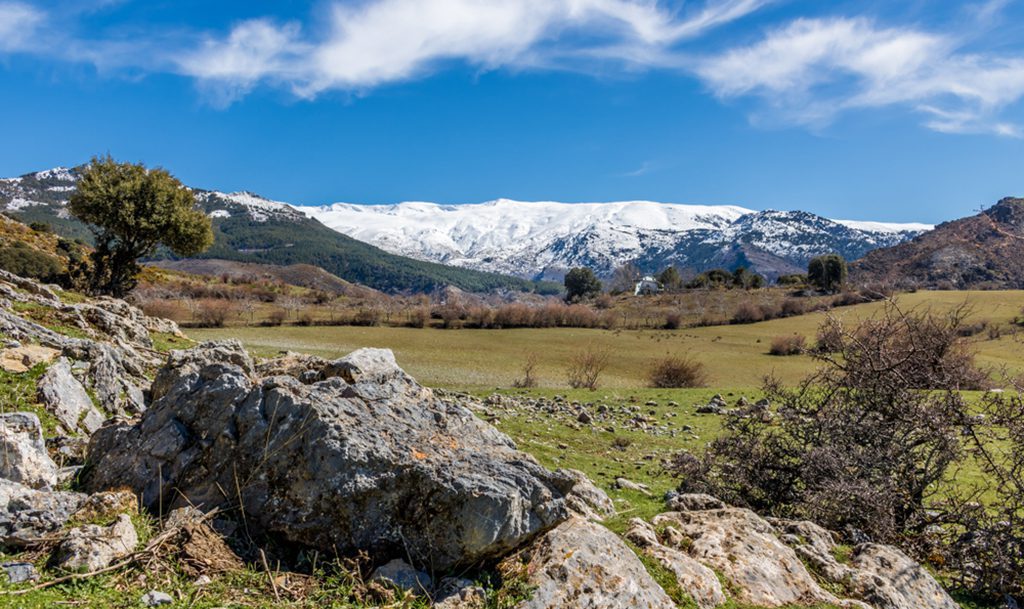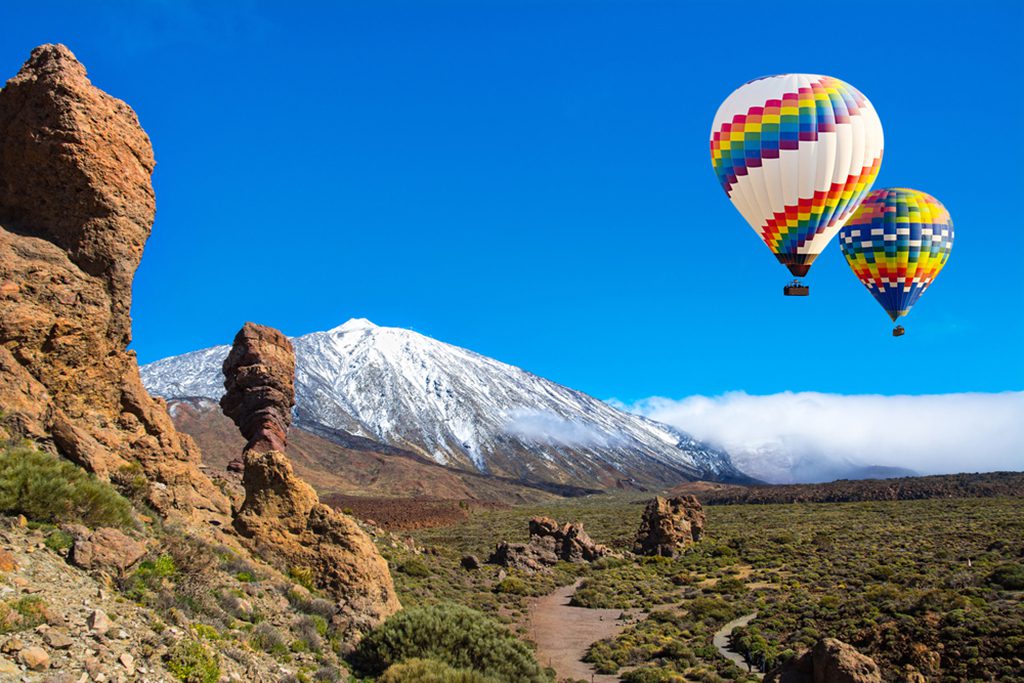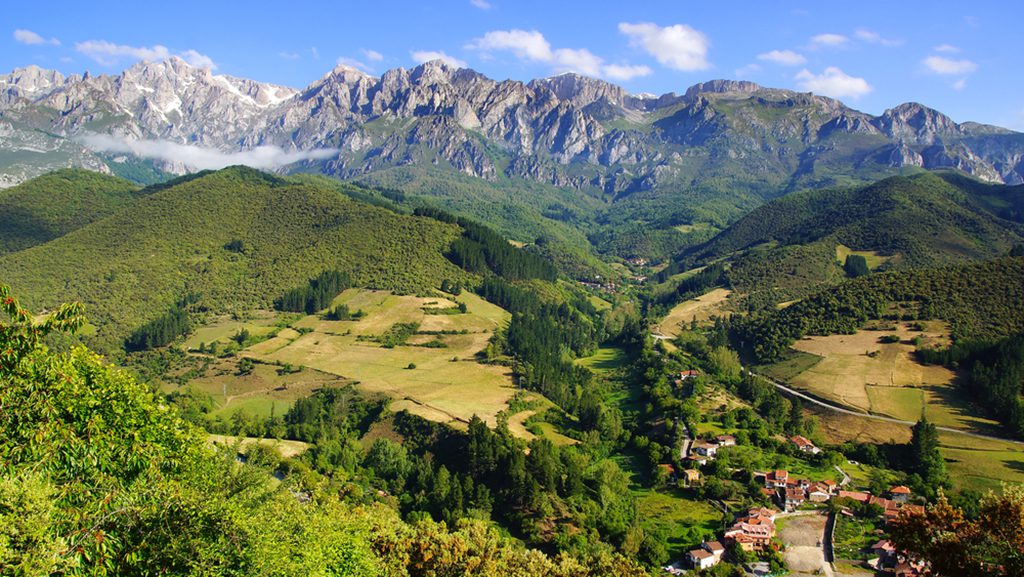Spain may not have many national parks, but the ones it does have are formidable. The natural riches of these parks set them apart, and they include some of the world’s most pristine and intriguing landscapes. Spain’s national parks have everything from lush green fields and blue waterways to dense forests and snow-capped mountains.
They’re the locations of both barren volcanic deserts and lush tropical islands, as well as protected marine environments under the sea. To attract visitors and preserve natural resources in the long term, several national parks have adopted sustainable tourism and conservation policies.
No matter which park you visit, you can expect to see a wide variety of flora and animals, and certain parks have been recognized for providing some of the best chances to see birds of prey anywhere. Don’t stay inside; instead, pack your binoculars and get out to discover Spain’s stunning national parks.
12. Tablas de Daimiel National Park

A stunning view of Ablas de Daimiel National Park in Castilla la Mancha, Spain. Image source: Joserpizarro/Shutterstock.com
If you like watching birds, this park is heaven on earth. The park’s flat wooden walks make it easy to stroll around its marsh and river areas and see the abundant vegetation. Many species of migrating birds, including ducks and geese, continue to use these wetlands as a critical resting and feeding area throughout their journeys. Some have chosen to spend the winter here or have made their nests here.
Waterfowl such as purple and gray herons, tiny egrets, and red-crested pochards are year-round inhabitants. Occasionally, visitors can see a variety of fish species from the park’s elevated observation decks. Aside from its natural beauty, the park is well-known for its breathtaking sunsets over the nearby canals.
11. Cabaneros National Park

Holm oaks within the grassland in Cabaneros National Park, Spain. Image source: Jacinto Marabel Romo/Shutterstock.com
Due to the high concentration of wildlife, Cabaneros Park is frequently referred to as the “Spanish Serengeti.” Deer, Iberian lynx, wild boars, foxes, otters, and a variety of bird species, such as the black stork, Spanish Imperial Eagle, multicolored bee-eaters, and Eurasian black vultures, find sanctuary there.
When the time comes for male deer to compete for female attention, they often resort to horn-locking and battling. Lush flora makes up the environment, which is one of the few intact specimens of a Mediterranean forest. In some respects, this vast park is reminiscent of a savannah, with interspersed mountain ranges whose peaks provide breathtaking panoramas of the whole park.
10. Timanfaya National Park

Amazing panoramic landscape of volcano craters in Timanfaya National Park. Image source: Olena Tur/Shutterstock.com
Photos shot against the background of these national parks can easily be misinterpreted as being taken on Mars. Over time, the park’s resident volcanoes covered the region with molten lava that has now hardened, resulting in the red and black landscape.
Most of the volcanoes are inactive at the present time, but tourists can still feel the earth’s heat. In fact, there are spots where a geyser will form if water is poured over the ground.
At first, conservationists pushed for the region to be protected because of the abundance of rare plant and animal species that had adapted to flourish there. The park has even attracted the attention of NASA. This bleak area was utilized for training purposes for the Apollo 17 crew.
9. Aiguestortes National Park

Amazing view of Lake Llebreta in Aiguestortes National Park, Catalonia. Image source: Lenar Musin/Shutterstock.com
If you want to see nature at its purest, come to this national park. Images of green, blue, and white predominate as snow-capped mountains give way to dense forests and crystal-clear waterways.
The park is home to about 200 lakes, and its forests are populated by a wide range of old tree species, including pines, birches, beech trees, and conifers. An outstanding representation of the Spanish Pyrenees, this national park is unique to Catalonia.
Wild goats, bearded vultures, and marmots are just some of the elusive animals that keep visitors to the parks here captivated.
8. Monfrague National Park

The Monfrague National Park is a beautiful place ideal for observing birds from central Spain. Image source: LucVi/Shutterstock.com
The park in Monfrague is one of a kind. The typical Iberian terrain has a rich variety of plant and animal life. It has a rich history and is known as one of the best places to go bird viewing in Europe.
At Monfrague, you can see around 400 different species of raptors. There are vultures and eagles nesting in the mountains, and kingfishers and nightingales can be seen along the Tagus and Tietar rivers that run through the park. Legends abound about the ruined castle of Monfrague, and the prehistoric cave paintings that decorate the area are still visible today.
7. Atlantic Islands of Galicia National Park

Cies Islands, National Park Maritime-Terrestrial of the Atlantic Islands, Galicia, Spain. Image source: Noradoa/Shutterstock.com
There is a maritime-terrestrial park called the Atlantic Islands of Galicia, which consists of four deserted islands in the Atlantic Ocean. In addition to being a pioneer in ecotourism, In an effort to protect the natural environment, the park is only open during the summer. White sand beaches, a clear blue sky, and dense pine forests make up the terrain above the lake.
Underneath the pristine surface of the ocean, a diverse community of marine life flourishes, including over 200 types of seaweed, thriving coral reefs, and mysterious underwater caverns. A wide variety of shellfish, dolphins, whales, and basking sharks all make their homes in these seas. As you would expect from a group of islands that was previously frequented by pirates, there are many stories to be told about the high seas.
6. Caldera de Taburiente National Park

Cies Islands, National Park Maritime-Terrestrial of the Atlantic Islands, Galicia, Spain. Image source: Curioso.Photography/Shutterstock.com
This breathtaking national park is home to massive mountain peaks, an amazing caldera, and rare native Canary Pines. The park’s namesake, a broad, flat valley surrounded by towering mountain ranges, is a 10-kilometer-wide caldera. Over 2 million years ago, a volcanic explosion and subsequent erosion formed the region.
Even though the park is usually bright and clear in the mornings, the afternoons often bring seas of cloud that drop onto the caldera, creating a very different scene. No matter what time of day it is, tourists visiting the caldera will feel insignificant next to the tallest peak face, which rises 2000 m from the caldera floor.
5. Cabrera Archipelago National Park

Small dinghy in the calm waters of the port of Cabrera. Image source: Jaume Rossello Cuni/Shutterstock.com
Due to its isolated location, this national park has remained relatively undeveloped for millennia. Neptune’s grass fields cover most of the islands, and they are home to several plant species found nowhere else.
However, that’s not all the island has to offer in terms of biodiversity; in fact, it’s home to a number of animals, such as the black lizard and the sea snail, that are otherwise uncommon in the Balearics. Massive colonies of seabirds call the beaches home, and marine mammals like turtles, dolphins, and whales find safety there.
4. Sierra Nevada National Park

Sierra Nevada national park landscape. Image source: Lucy Left/Shutterstock.com
Spain’s largest national park, Sierra Nevada, is also home to some of Europe’s tallest peaks. Thus, the park’s remarkable ecological variety is a major selling point.
The park’s lower levels consist of forested valleys and winding rivers. However, ascending routes lead to a landscape of alpine forest and bare mountain summits. The Sierra Nevada mountains provide spectacular views of the Mediterranean Sea and Morocco on clear days. The Sierra Nevada’s violet, juniper, and barberry are all plants that do well in the harsh alpine environment.
3. Teide National Park

Beautiful view of unique Roque Cinchado rock formation, Teide National Park, Tenerife, Canary Islands, Spain. Image source: Olena Tur/Shutterstock.com
Spain’s tallest peak, Mount Teide, can be found in the Canary Islands’ Teide National Park. When compared to the rather flat landscape that makes up the remainder of the park, Mount Teide stands out dramatically. For good reason, nearly 3 million people flock to this park annually, making it the busiest national park in all of Europe.
The whole area is dominated by volcanic soil, creating an otherworldly atmosphere, and the park is large enough that it is rarely visited by more than a handful of people at a time. There are caves, craters, and lava rivers here that have been petrified in stone, and tourists will still be amazed by the variety of landscapes they encounter.
2. Ordesa National Park

Beautiful view of unique Roque Cinchado rock formation, Teide National Park, Tenerife, Canary Islands, Spain. Image source: Pablesku/Shutterstock.com
The natural splendor of Spain’s first national park, Ordesa, cannot be overstated. The area is replete with scenic waterfalls, rivers, and streams. They are dotted over lush valleys, thick forests, and towering peaks. The Pyrenees Mountains, though, are the park’s crowning glory. They combine to create a breathtaking panorama that thrills sightseers and residents alike.
The ironically named Mount Perdido towers over 3330 meters above sea level as the tallest peak in this group. The peak stands out against the European skyline as the tallest limestone peak on the continent. Bearded vultures, griffin vultures, and golden eagles are just a few of the many birds of prey that call Mount Perdido and the surrounding massifs home.
1. Picos de Europa National Park

Picos de Europa National Park. Cantabria, Spain. Image source: Igor Plotnikov/Shutterstock.com
One of the most picture-perfect landscapes in the world can be seen in the Picos de Europa. The three mountain ranges in the park’s northern Spanish location—the Central, Western, and Eastern ranges—provide the park with its name. all of which are cut through by deep ravines carved by rivers. When mankind first set out to sea, their size was the first clue they had that they were nearing shore. The park has several paths that are both easy to follow and well designated, making them ideal for taking in the area’s spectacular scenery.
Since the ocean is just 20 kilometers from the park, there are several vantage points from which to see it. Besides them, the park has meadows, green forests of beech and oak, rocky crags, streams, high peaks, and deep ravines. Nothing is off limits at the Peak of Europe. Absolutely amazing.



